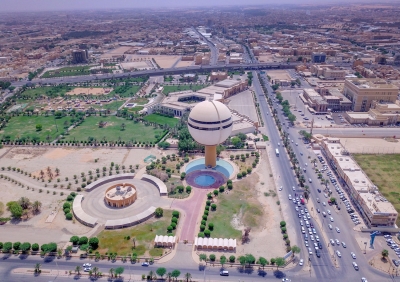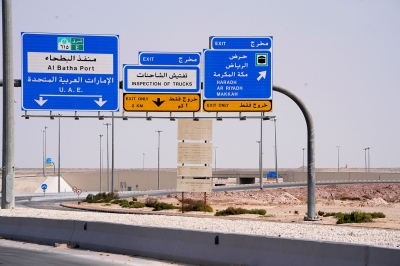
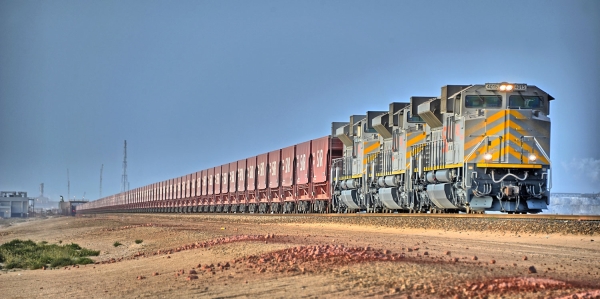
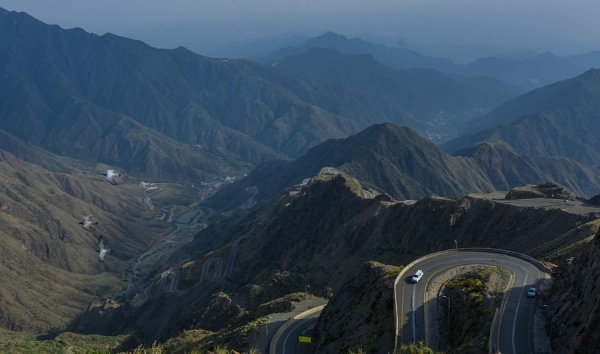
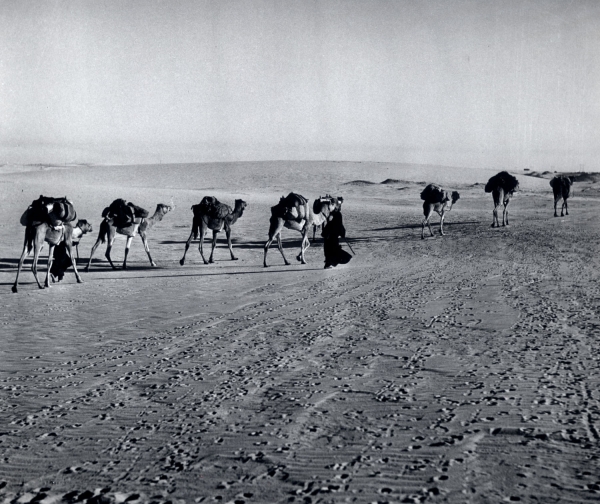
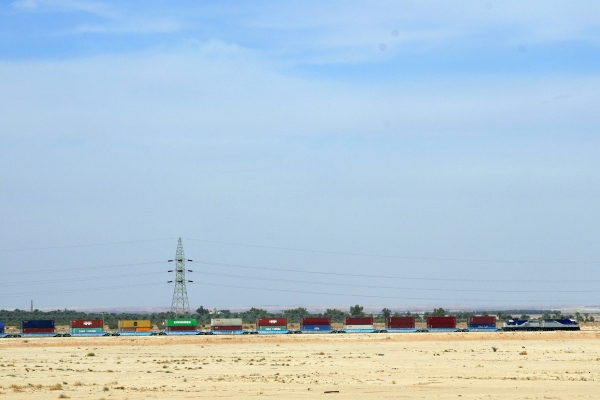
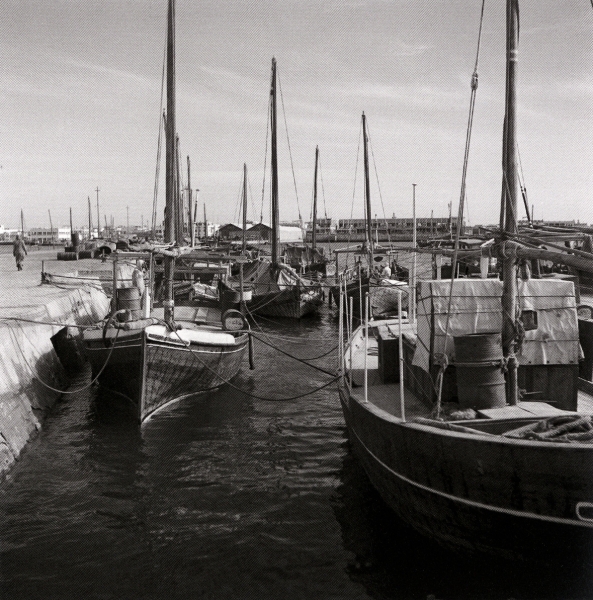
Transport in the Kingdom of Saudi Arabia refers to its land, maritime, and air transport network. The total road length is approximately 268,000 km, including about 75,000 km of intercity roads. The Ministry of Transport and Logistic Services is responsible for managing and regulating the land, maritime, and air transport systems in the Kingdom.
National Transport and Logistics Strategy
The National Transport and Logistics Strategy represents a significant shift in leveraging the Kingdom’s capabilities and its strategic location as a hub connecting international trade routes across three continents. The strategy aims to develop all modes of transportation, including air, land, maritime, and rail transport, forming a comprehensive roadmap for the future development of the transport and logistics sectors in the Kingdom.
The National Transport and Logistics Strategy is an organizational structure and set of plans aiming at enhancing transport and logistics operations in the Kingdom, establishing it as a global logistics hub connecting three continents. It was launched in 2021 by Crown Prince, Prime Minister, Chairman of the Council of Economic and Development Affairs, and Chairman of the Supreme Committee for Transport and Logistics, His Royal Highness Prince Mohammed Bin Salman Bin Abdulaziz Al Saud.
Objectives of the National Transport and Logistics Strategy
The National Transport and Logistics Strategy focuses on developing and investing in the transport and logistics system to advance the sector. This is achieved by building modern infrastructure to enhance and facilitate transport domestically and internationally. The strategy aims to accomplish four main national goals: solidifying the Kingdom’s status as a global logistics hub, improving the quality of life in Saudi cities, contributing to balancing the national budget, and improving government performance.
Additionally, the National Transport and Logistics Strategy aims to achieve several objectives that bolster economic growth and development. This includes raising the transport and logistics sector's contribution to the national gross domestic product (GDP) to 10 percent and increasing the sector's annual non-oil revenues to approximately SAR45 billion by 2030.
Road lengths in Saudi Arabia
The total length of roads in the Kingdom reaches about 268,000 km, including about 75,000 km of intercity roads. The longest is the road connecting Makkah al-Mukarramah City and Riyadh City, the capital, with a total length of 820 km. The Kingdom is connected to the world through several international airports and has three passenger railway lines spanning a total of 2,476 km across seven administrative provinces. The Kingdom operates ten major ports, making it one of the largest maritime transport networks in the Middle East.
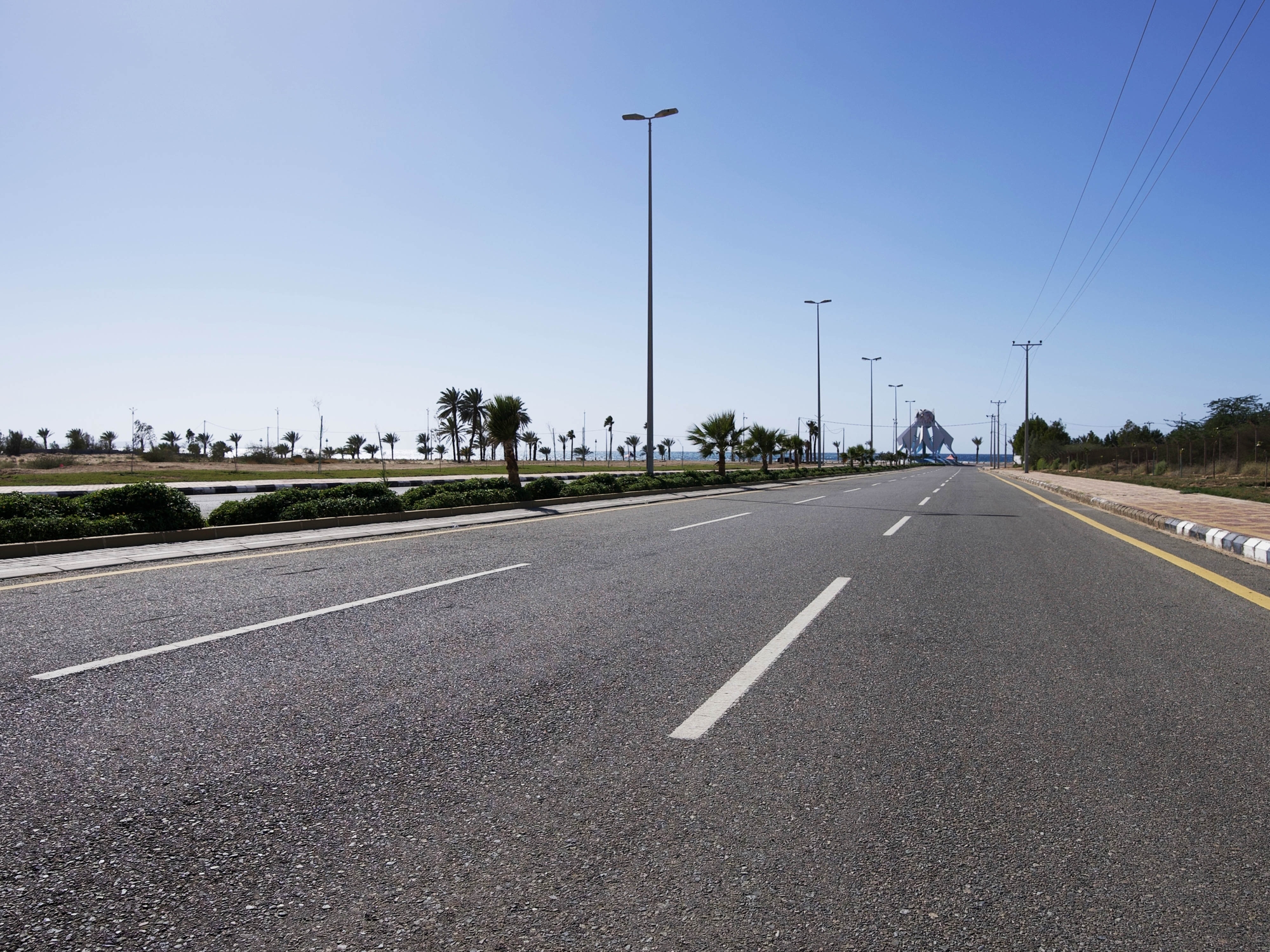
Saudi exports and imports via transport modes
Maritime transport meets 95 percent of the Kingdom's export and import needs. The Kingdom's ports handle approximately nine million containers annually from 13,000 ships. Railways support ports by facilitating the transportation of various goods, with cargo moving between King Abdulaziz Port in Dammam and Riyadh Dry Port along a 550 km rail line. The air transport sector also contributes to facilitating logistical transport operations among the Kingdom's cities, with the Kingdom receiving more than 653,000 t of cargo through its airports in 2021. Given its strategic location connecting three continents through key maritime trade routes along the Arabian Gulf, the Red Sea, and the Gulf of Aqaba, the logistics transport sector forms a core part of the Kingdom's transportation network.
Land transport in Saudi Arabia
History of land transport
After the unification of the Kingdom by the Founding King Abdulaziz Bin Abdulrahman Al Saud, there was a need to connect the cities. His government prioritized building roads linking key cities to Makkah al-Mukarramah for its religious significance. Jeddah-Makkah road was one of the first roads ordered for paving in 1926. The same year, the road connecting Qassim to al-Madinah al-Munawwarah was paved. Three years later, the Riyadh-al-Ahsa road was also constructed.
By 1970, the Kingdom’s transport network was organized, with roads numbered, classified, and equipped with necessary traffic signs. Additionally, a comprehensive road management system was developed. Ring roads are contributing to organizing seamless transportation within and between cities, while the operational highway network spans approximately five thousand km, complemented by 124 km of bridges connecting the highlands and mountain passes in the south of the Kingdom. The Kingdom expanded its focus on land transport, particularly roads connecting it with neighboring countries. One notable example is the King Fahd Causeway, linking the Kingdom to the Kingdom of Bahrain, with a total length of twenty-five km.
The land transport sector oversees and manages various activities and services, including freight transportation and freight brokerage, car rental services and intermediaries, general taxi services and intermediaries, ride-hailing operations, and bus transportation services. It is also responsible for issuing necessary licenses to investors and individuals to operate within these sectors and provide services in the industry.
Transport in Riyadh
Several entities work collaboratively to develop and oversee the transport system in Riyadh, including the Royal Commission for Riyadh City, the Public Transport Authority, and the Ministry of Transport and Logistic Services.
Riyadh’s transport network comprises two primary sectors: air transport and land transport. Land transport is further divided into passenger and freight transport. The Ministry of Transport and Logistic Services oversees all transport-related matters within the Kingdom, including studying, designing, constructing, and maintaining road projects, as well as overseeing transportation operations within Riyadh City.
Development of main and ring roads in Riyadh
In 2020, His Royal Highness Prince Mohammed Bin Salman Bin Abdulaziz, crown prince, prime minister, and chairman of the Board of Directors of the Royal Commission for Riyadh City, directed the development of main and ring roads within Riyadh and connecting different parts of the city through a total distance of approximately four hundred km. This project seeks to increase the transportation capacity across the city and reduce travel time lost due to congestion. Major roads included in the development plan are the First Ring Road, Second Ring Road, King Fahd Road, King Abdulaziz Road, and Imam Saud Bin Faisal Road.
Riyadh buses
The Royal Commission for Riyadh City aims to enhance the city’s transportation infrastructure ecosystem by developing several mega projects, including the Riyadh Buses Project. This project supports the transportation infrastructure while fostering an investment environment by offering investment opportunities for the private sector in the industry, operations, and public transport sectors. It facilitates residents' commutes to work and reduces traffic congestion on the city's main roads.
The Riyadh Buses network is designed in three operational levels. The first is "Dedicated Bus Lanes," which includes three routes, with a length of about 160 km, and about 180 stations distributed on its round-trip routes. The second level is "Regular Bus Routes," which connects residential neighborhoods across the city through nineteen routes with a length of about 904 km for round-trip routes. The third level is "Feeder Bus Lines," which operates within residential areas, with a length of about 825 km for round-trip routes and serving most neighborhoods of the capital.
Riyadh Metro
Riyadh Metro, also known as the Riyadh Train, is a rapid transit system serving the residents of Riyadh, the capital of the Kingdom. It forms the backbone of the city’s public transport network and is overseen by the Royal Commission for Riyadh City. It is one of three public transport systems operating throughout the week.
Riyadh Metro is the Kingdom’s first railway project to pass through underground tunnels with a depth of twenty to thirty-five m. It relies on an automated operating system (driverless) controlled from central control rooms. The metro’s cars share a unified design, with 338 cars expected upon project completion. At the time of operation, the project will deploy 202 trains and five operational centers for managing and controlling train movement and monitoring trains, tracks, stations, and project facilities.
The Riyadh Metro Project was introduced following the approval of the Council of Ministers to implement the King Abdulaziz Public Transport Project in Riyadh City (trains and buses) on April 23, 2012. The Saudi government awarded contracts worth USD22.5 billion to three international consortiums led by major global companies specializing in railway and bus network construction and operation.
Transport in Makkah al-Mukarramah
Makkah al-Mukarramah is connected to other cities in the Kingdom through an extensive network of roads, including the Makkah al-Mukarramah–Jeddah highway, with a length of seventy km, Makkah–Taif highway (al-Sail), with a length of seventy km, and Makkah al-Mukarramah–al-Madinah al-Munawwarah highway, with a length of 421 km.
Makkah al-Mukarramah City features ring roads, which help to facilitate movement and transportation between different destinations. Additionally, the city is equipped with multiple intersections and major arterial roads to ease the movement of vehicles passing through the city. The Saudi Public Transport Company "SAPTCO" operates a major station in Makkah al-Mukarramah, from which numerous routes connect the city to other cities of the Kingdom. The company also provides public transportation services within the city.
In 2012, a Royal Decree approved the implementation of the Public Transport Program in Makkah al-Mukarramah City, including a network of buses and trains, aimed at reducing traffic congestion, particularly during the Hajj and Ramadan seasons.
In 2021, the Royal Commission for Makkah City and Holy Sites launched the Unified Transport Center in Makkah (Naql Makkah) to oversee transportation-related operations and activities within Makkah al-Mukarramah City and the holy sites, as part of the projects of the mobility and transportation infrastructure programs.

One of the key infrastructure projects in the Makkah al-Mukarramah Province is the "Masar Destination" Project, designed to facilitate safe and seamless movement for visitors by separating pedestrian and vehicle traffic. The project offers multiple transport options, including a metro and a shuttle bus network, along two main roads with underground corridors and a central pedestrian walkway. The project aims to improve access to the Grand Mosque and the central area, forming an integral part of Makkah al-Mukarramah City’s comprehensive transport system. King Abdulaziz Road, which serves as the project's core, starts from Makkah–Jeddah highway, passing through the Third Ring Road, Abdullah Arif Street in al-Rusaifa, and al-Mansour Street, before connecting to the Second Ring Road, then the First Ring Road. The project covers an area of 1.2 million m², with a total length of approximately 3.65 km.
Al-Mashaaer al-Mugaddassah Metro Line
Al-Mashaaer al-Mugaddassah Metro Line is dedicated to serving pilgrims in Makkah al-Mukarramah during the Hajj season. Established in 2009, it became fully operational in 2011, with its inaugural journey in 2010. The metro line connects the holy sites "Mina, Muzdalifah, and Arafat" through nine stations with a total length of approximately twenty km. The metro system consists of sixteen trains, each featuring 204 air-conditioned carriages. With a capacity of three thousand passengers per train, the system’s total hourly capacity reaches 72,000 passengers.
Transport During Hajj Season
Transport during the Hajj season is one of the services provided by the Kingdom to pilgrims, supervised by the Ministry of Hajj and Umrah and the Ministry of Transport and Logistic Services, in collaboration with licensed service providers. This aims to ensure the arrival of the Grand Mosque's visitors to Makkah al-Mukarramah, transport them between the holy sites, and secure their performance of the Hajj rituals.
Hajj Season transportation system
Pilgrims arrive in Makkah al-Mukarramah through flights to King Abdulaziz International Airport in Jeddah or Taif International Airport, then transfer to Makkah al-Mukarramah via the Haramain High-Speed Railway or by using dedicated buses or private transport vehicles.
The operational plans for the transportation and logistics sectors in the Kingdom during the Hajj season include preparing road networks, ensuring the readiness of airports and ports, and the networks of railways and public transport buses.
The Haramain High-Speed Railway runs on electric power, reaching speeds of up to three hundred km/h. It operates routes between Makkah al-Mukarramah and al-Madinah al-Munawwarah, passing through Jeddah and King Abdullah Economic City, ensuring fast, safe, and comfortable travel for pilgrims. During the 2023 Hajj season, the Haramain High-Speed Railway successfully transported 750,000 passengers through 3,627 trips, achieving a punctuality rate of 98 percent.
During the Hajj season, Saudi Arabia Railways "SAR" operates al-Mashaaer al-Mugaddassah Metro Line, transporting pilgrims across nine stations, starting from Arafat, passing through Muzdalifah, and ending at Mina. Al-Mashaaer al-Mugaddassah Metro Line fleet includes sixteen trains operating at a speed of eighty km/h, connecting the nine stations of al-Mashaaer through an eighteen km dual-track railway. Each train accommodates three thousand passengers, with a total capacity of 72,000 passengers per hour.
During the Hajj season of 2023, the metro line served 2.13 million passengers across 2,208 trips.
Shuttle transportation during Hajj Season
Shuttle transportation is a modern operational model integrated with the Hajj transportation system, managed by the General Syndicate of Cars. It is activated at the same time every year during the Hajj season as a two-lane route dedicated to buses. Regular shuttle transportation trips during the Hajj season include routes to and from Makkah al-Mukarramah outside the holy sites, and other routes within the holy sites during the performance of the rituals.
Transport in Dammam
Dammam City boasts an outstanding public transportation infrastructure, linking to other cities through a diverse network of highways. It is connected to al-Khafji and al-Khobar via the Dammam–al-Khobar highway, to Abqaiq, Dhahran, al-Hufuf, and al-Jubayl through the Dhahran–al-Jubayl highway, and to Ras Tannurah, Saihat, and al-Qatif via the Gulf Road. Additionally, Dammam is connected to many cities in other parts of the Kingdom, through eight-lane highways. It is also connected to the Kingdom of Bahrain through the King Fahd Causeway, spanning twenty-eight km.
The road network linking Dammam to strategic service locations includes two main routes connecting the city to King Fahd International Airport. The Saudi Public Transport Company "SAPTCO" operates intercity bus services from and to Dammam.
In 2014, the Council of Ministers approved the public transportation project for the Dammam Metropolitan Area and al-Qatif. The project aims to address traffic congestion by linking commercial centers within Dammam metropolitan cities and al-Qatif, as well as connecting them to King Fahd International Airport and the King Fahd Causeway. It also contributes to preserving the renewable environment and rationalizing fuel consumption.
Transport in Abha
Abha City is connected to other cities in the Kingdom through a network of land roads, including the Abha-Taif Road, which connects Abha with Taif Governorate in Makkah al-Mukarramah Province. Key routes also include Dala' Mountain Pass with a length of 11.4 km, and Shaar Mountain Pass, connecting Abha to Muhayil Aseer with a length of 14.2 km. Additionally, al-Samaa Mountain Pass connects Abha to Rijal Alma Governorate in Aseer Province.
Several projects have been carried out to enhance transportation infrastructure in Abha City, including the Prince Sultan Road Development Project along the Ring Road and the dualization of as-Sudah Road, which is a key tourist route. The project was implemented in two phases: the first covering ten km and the second extending eleven km. It also includes the intersection of Abha-al-Fara’ Road with King Abdullah Road.
Mountain pass roads in Saudi Arabia
The Ministry of Transport and Logistic Services has constructed paved roads and connecting routes through tunnels that cut through mountains. Additionally, suspended bridges have been built over valleys and slopes to link mountain peaks with the plains of Tihama. Modern road construction technologies were employed in building these bridges.
Aseer Province features eight major mountain passes: Sanan Pass, connecting al-Namas Governorate with al-Majaridah Governorate via Wadi Khat, spanning 9.5 km; Tila’ Pass, linking al-Khadra and al-Aqeeqa in northern al-Namas with Heed Abis in Tihama; Bani Amr Pass, connecting Bani Amr in as-Sarah with Heed Abis in Tihama through Shuaib Saqeen; Shaar Pass, connecting Abha City with Mahayil Governorate via Wadi Tih, stretching 14.2 km; Dala' Pass "Dhila’," connecting Aseer Province with Jazan Province through Wadi Dala' and Wadi Atoud, spanning 11.4 km; al-Arbua’ Pass, connecting Tanumah Governorate with Bariq via Wadi Baqrah; as-Samaa Pass, connecting Mount as-Sudah with Rijal Almaa via Wadi al-Khulas; and al-Jawah Pass "al-Farshah", a thirty-one-km-long pass connecting Sarat Abidah Governorate with al-Farshah in Tihama.
Makkah al-Mukarramah Province has two main mountain passes. The first is al-Kurr Pass “al-Hada Road,” which is the first paved road constructed to connect Makkah al-Mukarramah with Taif Governorate, with a length of twelve km. The second is al-Muhammadiyah Pass, linking ash-Shafa Center in Taif Governorate with Tihama.
Al-Bahah Province also features two passes. The first is al-Bahah Pass, connecting al-Bahah City, the administrative capital, with al-Mikhwah Governorate and its affiliated centers in Tihama through Wadi Rash, with a length of forty-six km. The second is al-Abna’ Pass, connecting Baljurashi Governorate with Namrah Center in the northern al-Ardiyyah of Tihama.
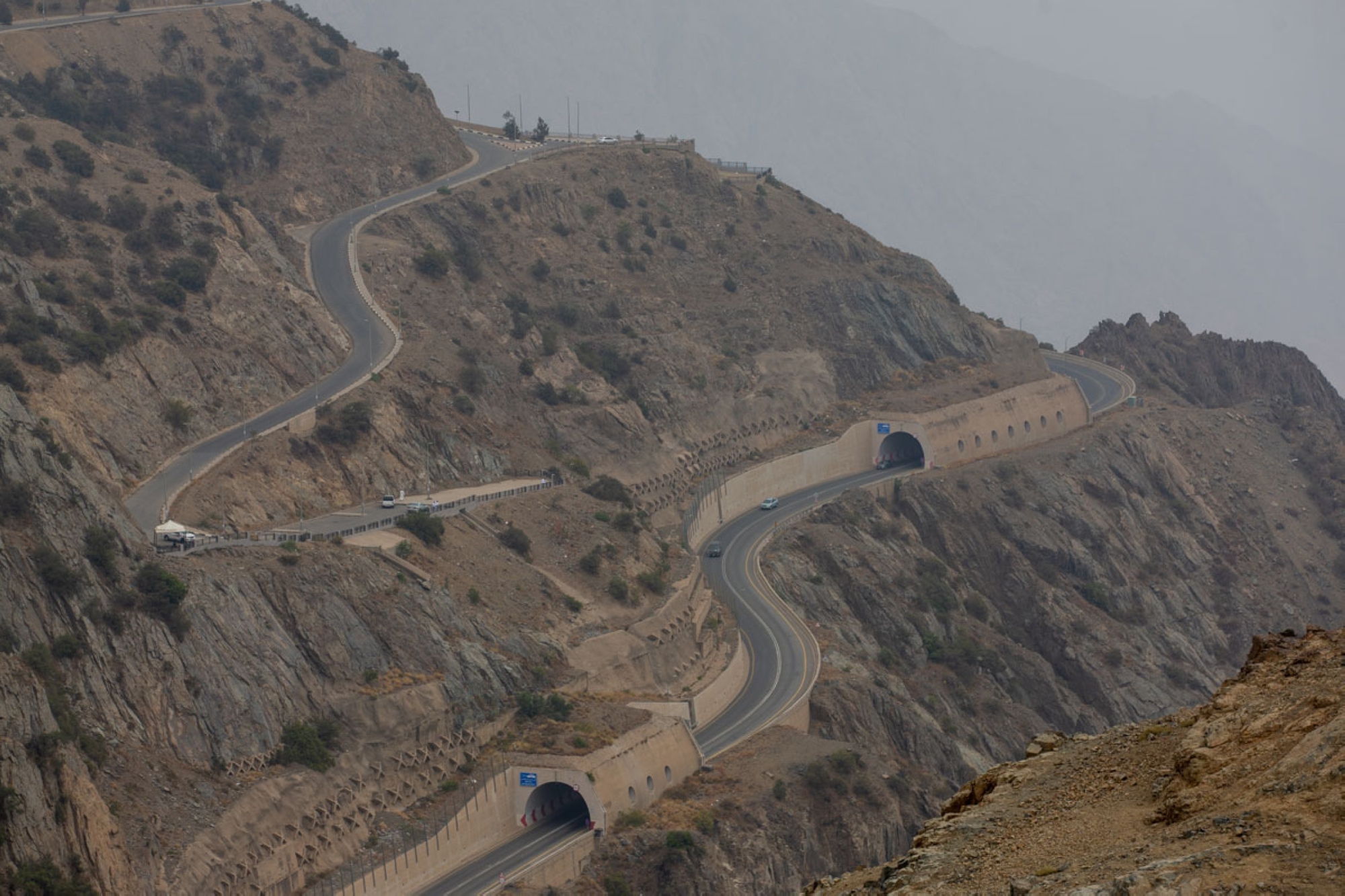
Tamm Service for vehicles
Tamm is a vehicle management service developed by Elm Company in collaboration with the General Directorate of Traffic in the Kingdom. The service electronically links the directorate with relevant sectors, including new car agencies, used vehicle sectors, insurance companies, car rental agencies, banks, and both public and private organizations owning multiple vehicles, as well as individuals. The service is available to vehicle owners at all times, including official holidays.
Through its online platform, Tamm offers several services, such as enabling authorized users to access vehicle details, including license plate numbers and vehicle types. It also facilitates providing and installing license plates on the buyer's vehicle without requiring visits to the Traffic Department, issuing temporary vehicle registration forms for new cars, displaying detailed information on vehicles registered under a specific entity, and allowing the addition or removal of actual vehicle users for vehicles under lease-to-own or daily rental agreements.
Saher System
Saher is an automated monitoring system implemented across most provinces and cities of the Kingdom. It aims to create a safe traffic environment, enhance the efficiency of existing road networks, and enforce traffic regulations. The system uses a network of digital cameras connected to the National Information Center under the Ministry of Interior to monitor traffic violations. These include not-wearing seatbelt violations, using mobile phones while driving, and failing to adhere to designated lane boundaries on roads.
Smart transport applications in Saudi Arabia
The Kingdom offers several licensed ride-hailing applications, including Uber Saudi Arabia Ltd., Terahal al-Mudun Land Transport Co., Careem Transportation Technology Co., Kddad Land Transport Co., Kaiian Rehla Information Technology Co., and Sama Rehla Trading Establishment.
Maritime transport in Saudi Arabia
Maritime transport in the Kingdom involves the transportation of goods and passengers through domestic sea routes between regions of the Kingdom and international routes between the Kingdom and other countries. This is facilitated by the Kingdom's strategic coastal access to three major bodies of water: the Red Sea, the Gulf of Aqaba, and the Arabian Gulf.
Maritime Transport Law in Saudi Arabia
The Ministry of Transport and Logistic Services oversees the maritime transport sector in the Kingdom. The Kingdom has developed its maritime network with an annual handling capacity of approximately nine million containers and the ability to receive 13,000 ships yearly. The network consists of ten major non-oil trade ports and 240 berths strategically located at the crossroads of east-west shipping routes. Additionally, the Kingdom plans to accommodate cruise ship passengers along the Red Sea coast and the Arabian Gulf.
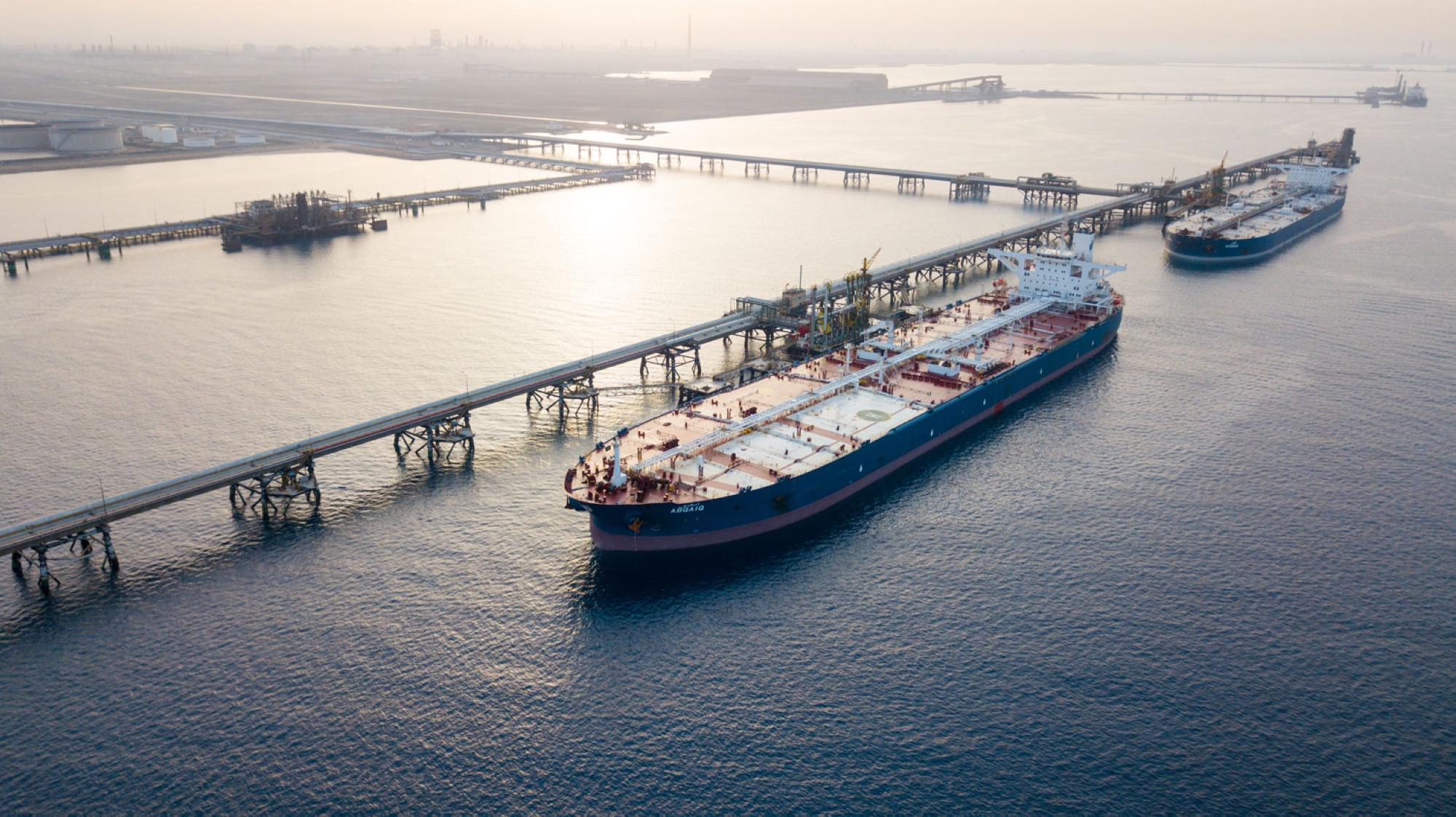
Economic importance of maritime transport in Saudi Arabia
The National Transport and Logistics Strategy targets several developmental projects that benefit the maritime transport sector by diversifying income sources, enhancing maritime infrastructure, and strengthening connectivity with all transport sectors in the Kingdom. Approximately 75 percent of the Kingdom’s non-oil maritime trade passes through its ports, along with one-third of the world’s oil shipments and about 12 percent of total global trade annually. The Kingdom has ten ports equipped for trade, travel, and leisure purposes, receiving around 13,000 commercial ships from across the globe. Commercial maritime transport remains the most active segment, with the Kingdom’s ports boasting an annual handling capacity of approximately nine million containers.
Geographical scope of maritime transport in Saudi Arabia
The Kingdom overlooks three major water bodies, with a total maritime border length of 3,800 km. Maritime transport operates along five routes originating from five administrative provinces, with ports and harbors along its coastline. These provinces are Tabuk, Makkah al-Mukarramah, Aseer, Jazan, and the Eastern Province. The Kingdom has 1,285 islands in the Red Sea, Gulf of Aqaba, and Arabian Gulf. Among these, six islands are inhabited; three in the Red Sea- Farasan al-Kabir, Sajid, and Qumah, and three in the Arabian Gulf-Tarut, Abu Ali, and Qunnah. These islands serve as residential hubs and are accessible through public transport ferries operating from major coastal cities.
Saudi Arabia’s achievements in the maritime transport sector
The Kingdom received the QUALSHIP 21 Certification from the United States Coast Guard. The cornerstone was laid for establishing a comprehensive logistics zone in the Middle East at Jeddah Islamic Port, with investments amounting to SAR1.3 billion over an area of 225,000 m². Additionally, gate nine of Jeddah Islamic Port was expanded after its upgrade and the paving of the western road. Exceptional agreements were signed with local, regional, and global companies to establish six integrated logistics zones and increase the number of logistics zones dealing with re-exports to thirty by 2030. Moreover, the Kingdom has sought to connect its ports with ports in the East and West and boost trade by adding seventeen new shipping services linking its ports with ports in the East and West and boosting trade.
Cruise Saudi
Cruise Saudi is a Saudi company specializing in organizing cruise trips to various local and regional destinations. In 2021, Jeddah Islamic Port inaugurated the first cruise ship terminal in the Kingdom. The establishment of Cruise Saudi was announced the same year, and the Kingdom's first mega-ship cruise sailed to local and regional destinations in July 2021.
Jeddah Islamic Port was selected as the main gateway for the arrival and departure of Cruise ships within the Kingdom due to its strategic importance, proximity to major tourist activity centers in Jeddah, and its location along the Red Sea coast. The Cruise passenger terminal was expanded, increasing its capacity to approximately 2,500 passengers.
Cruise Saudi also signed a partnership with MSC Cruises, a global cruise operator, offering world-class tourism experiences designed to meet travelers' expectations.
Saudi ports infrastructure
Saudi ports have kept pace with the rapid developments in maritime transport and logistics services by developing infrastructure. This advancement in operational efficiency enabled King Abdulaziz Port to receive the vessel "COSCO Solar", with a capacity of approximately 21,300 containers, a length of four hundred m, and a width of about fifty-nine m. Similarly, Jeddah Islamic Port welcomed the world’s first liquefied natural gas "LNG"-powered container ship, known for its environmentally friendly operations. The vessel had a capacity of approximately 23,000 standard containers, a length of four hundred m, and a width of sixty-one m.
Ports of Saudi Arabia
The Saudi Ports Authority (Mawani) oversees the management and operation of ports across the Kingdom, which boasts a well-developed maritime transport network comprising ten ports. These include six commercial ports: Jeddah Islamic Port, King Abdulaziz Port in Dammam, al-Jubayl Commercial Port, Yanbu Commercial Port, Jazan Port, and Ras Tannurah Port. Additionally, there are two industrial ports: King Fahd Industrial Port in al-Jubayl and King Fahd Industrial Port in Yanbu, along with Ras al-Khair Port, designated for mining activities.
On March 20, 2022, the Saudi Ports Authority (Mawani) launched the Smart Ports Initiative to organize and expand Saudi ports in the maritime transport field, facilitate cargo handling, improve services for importers and exporters, and provide logistics services. The authority signed agreements with several companies, including "stc", "Ericsson", "Huawei", Saudi Global Ports "SGP", Red Sea Gateway Terminal, and DP World.
To strengthen the Kingdom's standing in global logistics services, the Saudi Ports Authority adopts the Fourth Industrial Revolution technologies with advanced applications, artificial intelligence, Internet of Things (IoT), and 5G technologies to implement the Smart Ports Initiative. Smart Ports utilize the latest advancements in information and communication technology to improve the quality of life, operational efficiency, and economic, social, and environmental services. Additionally, Smart Ports protects the marine environment by employing clean and renewable energy solutions.
Air transport in Saudi Arabia
The foundation of air transport in Saudi Arabia
The development of air transport in the Kingdom began in the mid-twentieth century under the name Civil Aviation Directorate, later renamed the General Authority of Civil Aviation (GACA) following a decision by the Council of Ministers in 2004.
The Kingdom's first airport was inaugurated in 1945 in Jeddah, followed by the opening of Riyadh Airport a year later. The Kingdom’s contributions to supporting the air transport sector extended internationally, with Riyadh serving as the permanent headquarters of the Regional Safety Oversight Organization (RSOO) for the Middle East and North Africa region.
The air transport sector in the Kingdom has been rapidly growing since its unification. It is home to one of the world’s tallest air traffic control towers, at King Abdulaziz International Airport in Jeddah. The Kingdom's airports collectively handle about eighty-eight million passengers a year.
Saudi Arabia's international and domestic airports
The Kingdom has several international and regional airports, including King Abdulaziz International Airport in Jeddah, King Khalid International Airport in Riyadh, King Fahd International Airport in Dammam, Prince Mohammed Bin Abdulaziz International Airport in al-Madinah al-Munawwarah, and Taif International Airport. Additionally, the Kingdom features domestic airports equipped for all types of internal civilian airline flights, yet they serve international destinations. These include Abha Airport, al-Ahsa Airport, al-Jawf Airport, Hail Airport, King Abdullah Bin Abdulaziz Airport in Jazan, Najran Airport, Prince Abdulmohsin Bin Abdulaziz Airport in Yanbu, Prince Naif Bin Abdulaziz Airport in Qassim, Prince Sultan Bin Abdulaziz Airport in Tabuk, and Prince Abdul Majeed Bin Abdulaziz Airport in AlUla. There are also domestic airports exclusively serving internal civilian airline flights, such as al-Wajh Airport, Dawadimi Airport, Bisha Airport, Gurayat Airport, Ar'ar Airport, Rabigh Airport, Rafha Airport, Sharurah Airport, Turaif Airport, Wadi ad-Dawasir Airport, and King Saud Bin Abdulaziz Airport in al-Bahah.
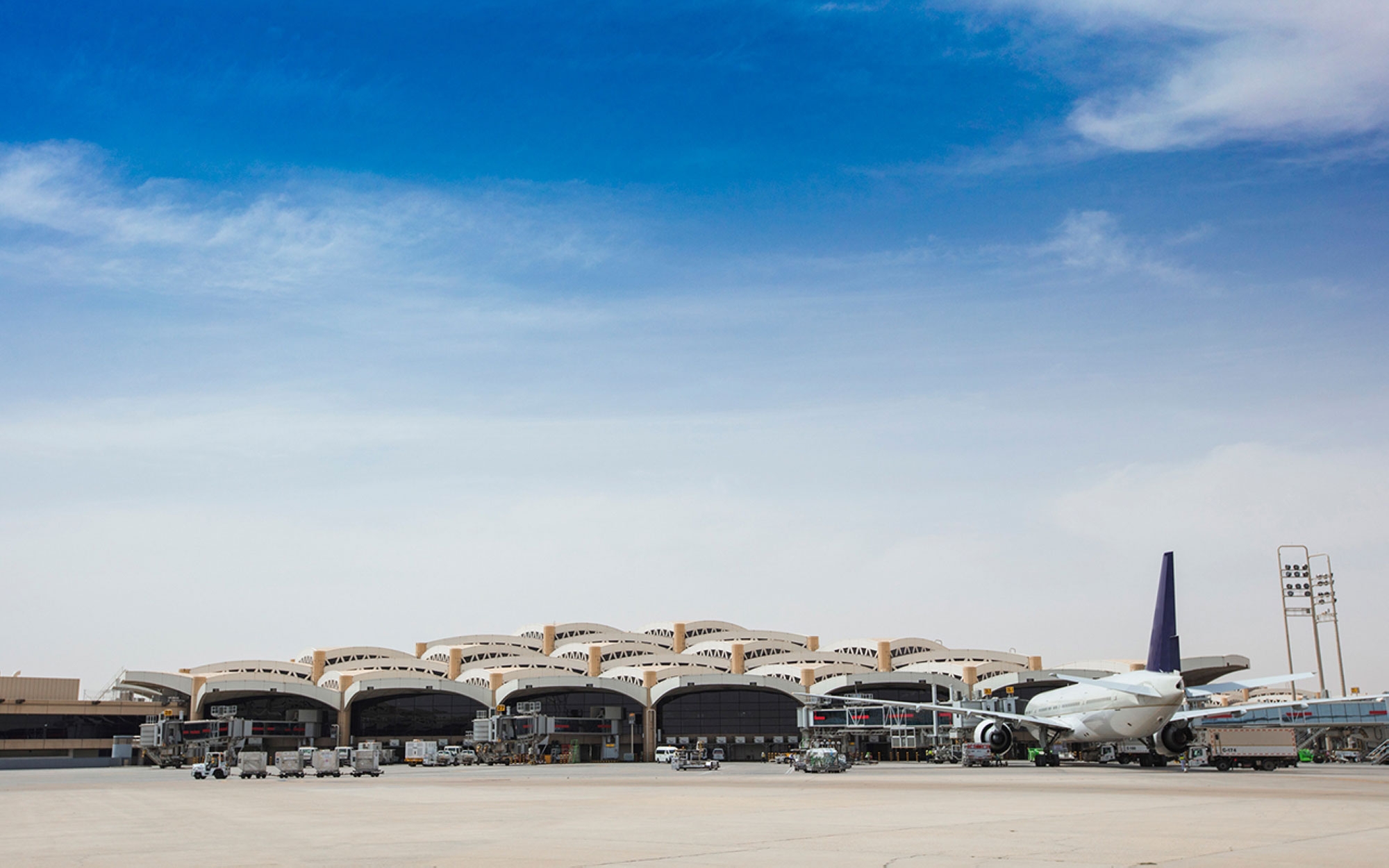
Airlines in Saudi Arabia
Airlines in the Kingdom encompass both passenger and cargo carriers, categorized into public and private airlines.
Nesma Airlines
Nesma Airlines is a member of Nesma Holding Group in the Kingdom. It operates as a carrier in the Arab Republic of Egypt, where it was officially launched in June 2007. It offers scheduled international and regional flights and passengers can choose between business and economy classes.
Flyadeal
Flyadeal was established on April 17, 2016, to meet the growing demand for affordable air travel. It is the low-cost subsidiary of Saudia Airlines, launched as part of the "SV2020" transformation strategy. The airline focuses on covering most domestic and international destinations. Its inaugural flight was on September 23, 2017, from Jeddah to Riyadh, coinciding with the Kingdom's eighty-seventh Saudi National Day celebrations.
Flynas
Flynas was established in 2007 and operates approximately 1,500 weekly flights to seventy domestic and international destinations with a fleet of sixty-four aircraft. It has transported over seventy-eight million passengers since its launch. Flynas has received the Skytrax World Airline Award for Best Low-Cost Airline in the Middle East for six years (2017, 2018, 2019, 2021, 2022, and 2023). Additionally, it has won the World Travel Awards for Best Low-Cost Airline in the Middle East for nine consecutive years from 2015 to 2023. The airline also achieved the highest rating in the APEX Four Star Rating, the top tier for low-cost carriers worldwide.
Saudia
Saudia is the first airline established in the Kingdom, founded on May 27, 1945, marking the beginning of air travel in the Kingdom with a single DC-3 aircraft. Over the years, Saudia has received several awards, including the World's Most Improved Airline Award in 2021 and the Best Guest and Employee Engagement Award in the "Sustainable Flight Challenge."
Saudia Private Aviation
Established in 2009, Saudia Private Aviation operates from four major hubs in al-Madinah al-Munawwarah, Jeddah, Dammam, and Riyadh.
On March 12, 2023, His Royal Highness Prince Mohammed Bin Salman Bin Abdulaziz Al Saud, crown prince, prime minister, and chairman of the Public Investment Fund (PIF), announced the establishment of "Riyadh Air," a fully PIF-owned company. The airline aims to become a leading national and global company in the aviation sector, with plans to serve over one hundred destinations worldwide by 2030.
Achievements of Saudi Aviation
According to the 2023 Air Connectivity Index Report by the International Air Transport Association (IATA), the Kingdom advanced fourteen positions in international air connectivity, ranking thirteenth globally after being twenty-seventh in 2019. The Kingdom also secured the seventh rank among G20 countries in the aviation security field, scoring 94.4 percent in the aviation security audit. Air traffic in the Kingdom experienced a 42 percent growth in passenger numbers during the first four months of 2023, transporting approximately 35.8 million passengers. In 2022, the total number of passengers reached 25.3 million. Additionally, that year, the Kingdom dominated the two busiest international air routes (Jeddah-Cairo and Riyadh-Dubai).
According to the 2023 Skytrax World Airport Awards, four Saudi airports ranked among the world's top fifty airports, competing against five hundred airports globally. King Khalid International Airport in Riyadh ranked twenty-seventh, improving from twenty-ninth in 2022. King Abdulaziz International Airport in Jeddah advanced to forty-first, up from forty-fourth in 2022. King Fahd International Airport in Dammam rose to forty-fourth after being fiftieth last year. Additionally, Prince Mohammed Bin Abdulaziz International Airport in al-Madinah al-Munawwarah secured the fifty-second rank, up from fifty-eighth in 2022. King Fahd International Airport also ranked first in the list of the best regional airports in the Middle East in the "Skytrax 2023" awards.
Air transport statistics in Saudi Arabia
The General Authority for Statistics revealed in the Air Transport Statistics Bulletin for 2022 that the number of international and domestic flight passengers in the Kingdom reached eighty-eight million, reflecting an 82 percent increase from 2021. The number of flights also rose by 41 percent compared to 2021, while the number of countries connected to Saudi airports increased to fifty-six, up by ten from 2021. Saudi Airlines dominated air travel operations, reaching 283,000 flights. The average number of international and domestic flights arriving and departing from international airports was approximately 131,29 flights per day, while the average number of arriving and departing flights at domestic airports amounted to 5,94 per day. The number of private aviation flights reached 64,000, showing a 14 percent growth compared to 2021. The total number of air transport-related establishments amounted to 1,443, encompassing passenger air transport, cargo air transport, cargo handling, transport-related services, and other transport support activities, with a 20 percent increase from 2021. King Abdulaziz International Airport ranked as the highest-density airport in the Kingdom in 2022, in terms of the number of passengers, with a recorded passenger count of thirty-two million.
Rail transport in Saudi Arabia
The history of railways in the Kingdom is closely linked to its mining industry. The idea of building a railway first emerged in the 1940s when the need for a seaport on the Kingdom's eastern coast arose to receive imported goods for Aramco. In 1947, a Royal Decree was issued to construct a railway connecting Riyadh to Dammam Port, which was inaugurated by King Abdulaziz in 1951. Since then, the rail transport sector has seen continuous improvements, with the number of railway stations growing after the establishment of the Saudi Railways Organization in 1966. By 2020, the network encompassed fourteen stations across seven administrative provinces. On February 16, 2021, the Council of Ministers issued a decision to abolish the Saudi Railways Organization, to be replaced by the Saudi Railway Company "SAR," effective April 1, 2021.
The railways contribute to connecting the Kingdom's regions, facilitating the transport of goods, and carrying passengers and travelers from one region to another.
Riyadh-Dammam Railway
The establishment of the first railway line in the Kingdom dates back to 1947, when the Founding King Abdulaziz Bin Abdulrahman Al Saud ordered the construction of a railway line with a length of 550 km, connecting Riyadh with Dammam Port. Its primary purpose was to transport passengers and imported goods to the capital. Officially inaugurated in 1951, the line continued its operations until 1985, when a new 450-km passenger line linking Riyadh, Dammam, and al-Ahsa was built. The original railway was then designated exclusively for freight transport from Dammam Port to the dry port in Riyadh City.
Haramain High-Speed Railway
It is an electric railway connecting Makkah al-Mukarramah and al-Madinah al-Munawwarah through Rabigh and Jeddah Cities, spanning 480 km. The train runs on electric power and features a dual-track system between Jeddah and Makkah. The train stops at five stations: three main stations in Makkah, al-Madinah, and King Abdulaziz International Airport in Jeddah, in addition to two transit stations in King Abdullah Economic City and Jeddah. Its initial operational trips were launched in 2018, with the first passenger trips commencing in 2019. The Haramain High-Speed Railway fleet consists of thirty-five trains, each comprising thirteen carriages, with a total seating capacity of 417 passengers per train. The number of passengers in the actual operational phases reached more than seven million travelers on approximately 32,000 trips from March 31, 2021, to mid-June 2023.
North Railway Line
The North Railway Line connects the north of the Kingdom to its center and east, with a length of 2,750 km. Its route was developed in two phases. The first phase involved the mining train, linking phosphate mining areas in the Northern Borders Province and bauxite mining sites in Qassim and Hail Provinces with export and processing facilities in Ras al-Khair in the Eastern Province. This 1,500 km line became operational in 2011. The second phase was dedicated to passenger and freight transportation, with a length of 1,250 km. It connects Riyadh with al-Hadithah border in Jordan, passing through Qassim, Hail, and Sudair, with six railway stations established along its route. Its route intersects with the mining railway line south of the track and diverges between Qassim and Hail Provinces. It was partially operational at the beginning of 2017.
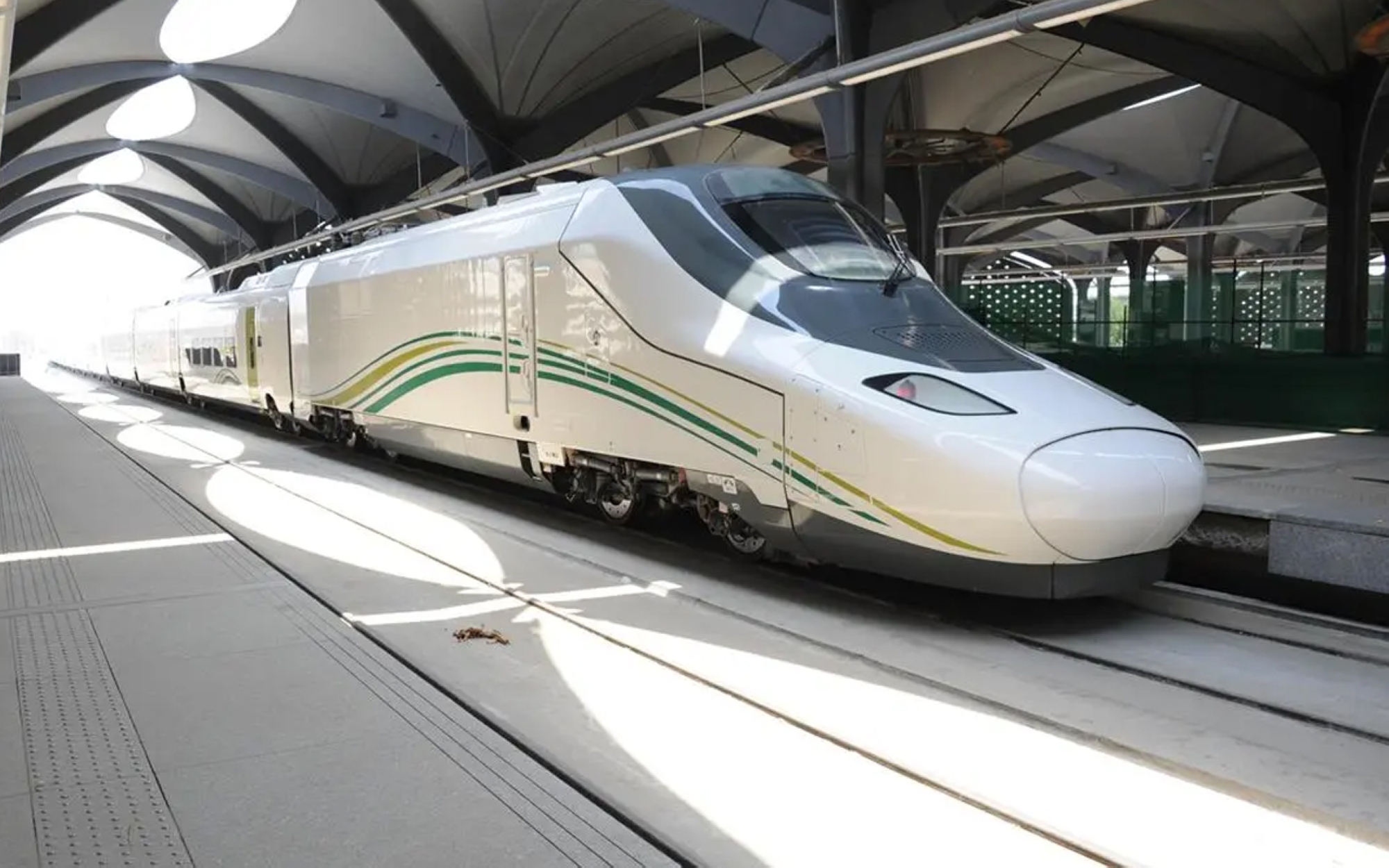
Government authorities related to transportation in Saudi Arabia
Ministry of Transport and Logistic Services
The Ministry of Transport and Logistic Services is responsible for managing and regulating the land, maritime, and air transport systems in the Kingdom. Its tasks include connecting the Kingdom to the world as a global logistics hub and a link between the three continents: Asia, Africa, and Europe. The ministry is also responsible for developing and implementing regulations, legislation, and transport policies within the Kingdom.
The ministry's history dates back to the 1950s when it was known as the Ministry of Transportation, overseeing all aspects of land and maritime transport. In 1975, it was restructured to include the Saudi Railways Organization and the Saudi Ports Authority (Mawani). The ministry's responsibilities significantly expanded in the early twenty-first century when its name was changed from the Ministry of Transportation to the Ministry of Transport in 2003. In 2021, the Council of Ministers approved renaming the Ministry of Transport to the Ministry of Transport and Logistic Services.
General Authority of Civil Aviation (GACA)
The General Authority of Civil Aviation (GACA) is responsible for overseeing all aspects of civil aviation in the Kingdom. Established in 1948 under the name “Civil Aviation Authority,” it initially included Saudi Airlines and the Civil Aviation Administration. In 2004, its name was changed to the General Authority of Civil Aviation. A Royal Decree was issued in 2016 to link GACA to the Minister of Transport and Logistic Services.
Its responsibilities include establishing mandatory regulations and laws to regulate and ensure air transport and air navigation safety. It also issues licenses and certifications for civil aviation sector personnel, develops air transport in line with modern international standards, monitors the implementation of civil aviation treaties and international agreements the Kingdom has joined, and oversees the creation, development, management, operation, and maintenance of air navigation systems. Additionally, it supervises firefighting and rescue services at the Kingdom’s airports, and constructs, develops, manages, operates, maintains, and upgrades civil airports. Furthermore, it grants necessary licenses to civil aviation and air transport sector institutions and companies, air cargo institutions and companies, ground service providers, and related support service companies in the Kingdom.
Saudi Ports Authority (Mawani)
The Saudi Ports Authority is responsible for operating, managing, and developing the Kingdom’s seaports, excluding military ports and economic cities. Established in 1976 under the name “General Corporation for Ports,” it was transformed into the Saudi Ports Authority in 2018, becoming financially and administratively independent. Its responsibilities include ensuring maritime navigation safety, issuing laws and regulations governing port operations, and granting maritime licenses.
The authority’s headquarters is located in the capital, Riyadh. It oversees the Kingdom's ports, including Jeddah Islamic Port, King Abdulaziz Port in Dammam, Ras al-Khair Port, al-Jubayl Commercial Port, and Duba Port.
Saudi Arabia Railways (SAR)
The Saudi Arabia Railways, known by its acronym "SAR," is responsible for establishing, managing, and operating all railway networks in the Kingdom. It was established in 2006. In 2021, the Saudi Railways Organization was abolished, to be replaced with "SAR." SAR is responsible for managing the transportation of passengers, mining materials, fuel, and both solid and liquid goods. It also works to attract local and foreign investments to participate in railway projects.
Under the new railway sector structure issued on February 26, 2019, "SAR" owns all operational, fixed, and movable assets related to railway transport projects across the Kingdom's cities.
Roads General Authority
The Roads General Authority is a governmental entity established by a decision from the Council of Ministers on August 2, 2022. It possesses public legal personality, and financial and administrative autonomy, and is organizationally linked to the Minister of Transport and Logistic Services. Headquartered in Riyadh City, it serves as the regulatory body responsible for legislating and overseeing the roads sector, ensuring compliance to enhance traffic safety and quality through the development and standardization of policies and standards, as well as introducing innovative and sustainable solutions.
Transport General Authority
The Transport General Authority is the regulatory body overseeing the rail, maritime, and land transport sectors in the Kingdom. Established in 2012 under the name Public Transport Authority, its organizational structure was revised on August 22, 2017, linking it directly to the Prime Minister, with a board of directors appointed by Royal Order. In 2019, its name was changed to the Transport General Authority. The authority is responsible for issuing licenses for transport activities, and monitoring service quality and safety.
The Transport General Authority operates in three main sectors:
- Land Transport Sector: Land transport services are essential for supporting the Kingdom's economic and social development. The Land Transport Sector within the Transport General Authority is responsible for organizing and developing all land transport activities, including buses, taxis, rentals, and trucks, in addition to supporting activities to make them economically and socially viable. The sector also grants licenses and permits to vehicles, operators, and transport facilities, monitors operations, develops executive regulations and ensures compliance therewith, and employs technology in oversight and control to ensure fair competition among service providers and protect users' interests.
- Maritime Transport Sector: The Maritime Transport Sector within the Transport General Authority focuses on the development and advancement of the Saudi fleet of ships, the qualification of mariners' capabilities in line with international safety standards, and the protection of the marine environment and maritime security as per the International Maritime Organization "IMO." The sector also aims to sustainably enhance and develop maritime Transport levels to achieve the objectives of Saudi Vision 2030.
- Rail Transport Sector: The Rail Transport Sector within the Transport General Authority oversees the quality and efficiency of rail-based transportation across the Kingdom in general. It is responsible for issuing licenses to rail service providers, developing services, and supervising the allocation of railways in partnership with the private sector internationally and locally. The sector also focuses on expanding the railway network within the framework of the National Transport and Logistics Strategy and in line with Saudi Vision 2030.
General Syndicate of Cars
The General Syndicate of Cars is the authority responsible for organizing and coordinating pilgrims' transportation companies in the Kingdom. It provides pilgrims with organized transportation services using modern, well-equipped vehicles that meet safety and environmental protection standards. Established on March 19, 1953, the syndicate initially operated one thousand buses, 160 small transport vehicles, and five transport companies. By 2000, the number of contracted companies increased to eleven, with 1,855 buses rented. As of 2019, the number of transport companies and organizations under the umbrella of the General Syndicate of Cars reached forty-nine, employing around 45,000 workers, including one thousand Saudis. A total of 18,000 buses have been used to transport 1,857,810 pilgrims. The syndicate established twenty-five support centers and thirty-four on-field vehicles operating 24 hours a day in Makkah al-Mukarramah and between the roads of al-Madinah al-Munawwarah, Makkah al-Mukarramah, and Jeddah. Since its inception and until 2019, the General Syndicate of Cars transported approximately 73.5 million pilgrims.
The future of transport in Saudi Arabia
To advance the transport sector in the Kingdom and align it with cutting-edge technology, the Ministry of Transport and Logistic Services has launched an initiative to monitor and catalog emerging global transport technologies. This initiative aims to foster the adoption of new transport and logistic services in the Kingdom, ensuring a sustainable future vision that embraces technical innovations and artificial intelligence in the transport and logistic services sector through a dedicated unit.
The ministry is focused on achieving several goals aligned with the future of transport and technological development. These include collaborating with research centers and educational institutions, tracking new technologies in the transport and logistics field, partnering with the private sector, and supporting international agreements. Furthermore, the ministry works on establishing a comprehensive big data repository, leading innovation and creativity through knowledge and data sharing with stakeholders, and conducting feasibility studies for future transport technologies.
Related quizzes
